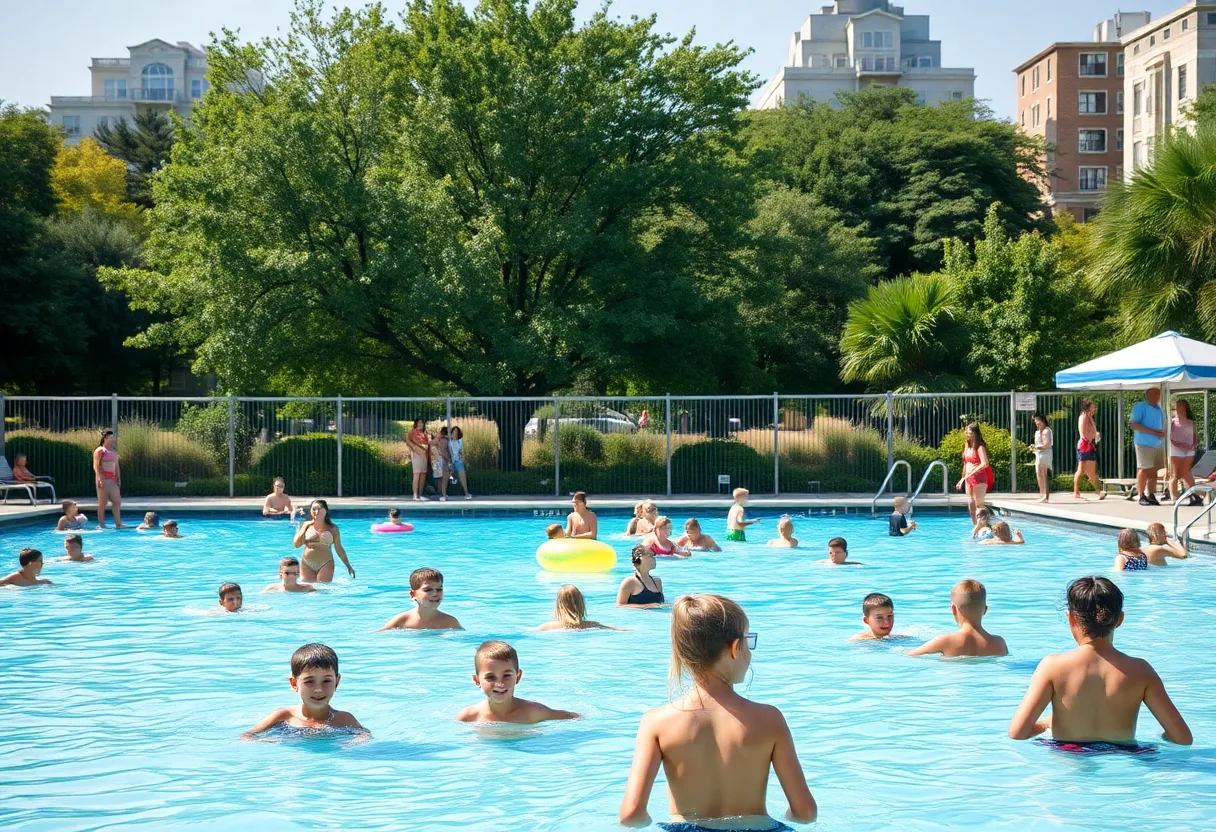Dallas, August 22, 2025
News Summary
Dallas city officials are proposing a phased closure of all nine community pools over the next three years as part of a $3 million budget reduction plan. The proposal, discussed by the Park and Recreation Board, aims to modernize remaining aquatic facilities. Attendance has significantly dropped this season, and key candidates for early closure include Grauwyler Pool, Glendale Pool, and Walnut Hill Pool. The board will review updated recommendations on August 1.
Dallas — City officials are considering a phased closure of all nine community pools over the next three years as part of a broader $3 million budget reduction plan. The proposal discussed by the Park and Recreation Board would close three pools per year, shifting resources to maintain and modernize remaining aquatic facilities and other city services.
Most important details
- The department’s current proposal calls for a three-year phased closure of all nine community pools, with three pools closing each year.
- The proposal is part of a $3 million budget reduction initiative that also includes cutting positions and reducing recreation center hours.
- No pool has been officially selected for closure yet; top candidates identified for potential early closure include Grauwyler Pool (District 2), Glendale Pool (District 4), and Walnut Hill Pool (District 13).
- Board members are scheduled to consider updated recommendations at their next meeting on August 1.
Supporting details
The Park and Recreation Department evaluated pools using criteria such as aging infrastructure, recent attendance levels, proximity to other facilities, and availability of alternative programs in the area. Department leadership reported that many pools have reached the end of their useful life, with the newest built in 1975 and the oldest dating back to 1947.
Attendance at community pools has dropped sharply this year, with the city reporting approximately 46% of last year’s attendance so far this season. Underutilization combined with rising repair costs—reported examples include operational expenses of up to $60 per visitor at some sites—helped drive the recommendation to consider closures and concentrate investments.
The staff’s original recommendation for the current fiscal year was to close two pools, but the board discussed accelerating the timeline to close three pools annually to free funds for improvements at the more heavily used facilities. Board members generally expressed support for a steady annual closure schedule to address maintenance backlogs and modernize aquatic infrastructure.
Budget context and contributing factors
The budget cut package is driven by several citywide financial pressures, including lower-than-expected sales tax revenue, an increase in home appraisal appeals impacting city revenue, and a mandate to hire additional police officers. Those pressures have required the parks department to consider service reductions alongside staffing adjustments and schedule cuts at recreation centers.
Long-term aquatic strategy
City planning documents from 2015 outline an aquatic master plan developed with community input. The plan recommends replacing outdated neighborhood pools with nine modern aquatics centers at an estimated cost of $75 million. Long-term goals focus on delivering improved aquatic options such as regional centers and spray grounds rather than maintaining numerous aging, underused pools.
Operational timeline and logistics
Once a specific pool is selected for closure, dismantling the existing infrastructure is expected to take approximately six to eight months. Designing a replacement or alternative facility—if pursued—would typically require an additional six to eight months. Some closures could occur sooner if mechanical failures render a facility inoperable.
Community impact and mitigation
Residents have expressed concern about losing neighborhood pools that serve as safe recreational spaces for youth. Park officials said they are considering measures to reduce the impact on affected communities, including providing free access to remaining aquatic centers for residents from areas that lose pools. Board members stressed the importance of clear public communication to explain rationale, timelines, and alternatives.
Next steps
- The Park and Recreation Board will review updated recommendations on August 1.
- If approved, closures would be phased three per year over three years; specific pool selections and transition plans would be announced after board approval.
- Officials plan to continue public outreach to explain criteria, timelines, and mitigation options for affected neighborhoods.
Background
The parks department’s push for consolidation and modernization is rooted in decades-old aquatic infrastructure, decreased usage, and constrained municipal budgets. The discussion aims to balance short-term fiscal requirements with a multi-year vision that would replace outdated neighborhood pools with fewer, higher-quality aquatics facilities that serve broader regional needs.
Frequently Asked Questions
Which pools are likely to be closed first?
No official selections have been made. Top candidates under consideration include Grauwyler Pool (District 2), Glendale Pool (District 4), and Walnut Hill Pool (District 13), based on assessment criteria.
How long will closures take once a pool is selected?
Dismantling infrastructure is expected to take about six to eight months, with an additional six to eight months to design a replacement or alternative facility if pursued. Some closures may happen sooner if mechanical problems occur.
Why are pools being targeted for closure?
Pools were evaluated for aging infrastructure, low attendance, proximity to other facilities, and high repair costs. Budget shortfalls and citywide funding pressures also factored into the decision-making process.
What alternatives are being considered for affected communities?
Possible mitigations include free access to other aquatic centers for residents of affected neighborhoods and investment in regional aquatics options such as spray grounds and modern centers as part of a long-term plan.
When will final decisions be announced?
The Park and Recreation Board will present new recommendations at its meeting on August 1. Specific closure decisions would be announced after board approval and further planning.
Key features at a glance
Deeper Dive: News & Info About This Topic
HERE Resources
Dallas Faces $36.5 Million Budget Shortfall Amid Proposed Cuts
End-of-Summer Activities for Families in Dallas-Fort Worth
YMCA of Metropolitan Dallas Enhances Swim Safety
Additional Resources
- Dallas News: Community Pools Closure Plan
- Wikipedia: Dallas
- WFAA: Budget Cuts and Pool Closures
- Google Search: Dallas Community Pools
- NBC DFW: Dallas Swimming Pools Cut
- Encyclopedia Britannica: Dallas
- Community Impact: Richardson Pool Closures
- Google News: Dallas Pool Closures
- Dallas News: Commentary on Public Pools

Author: STAFF HERE DALLAS WRITER
The DALLAS STAFF WRITER represents the experienced team at HEREDallas.com, your go-to source for actionable local news and information in Dallas, Dallas County, and beyond. Specializing in "news you can use," we cover essential topics like product reviews for personal and business needs, local business directories, politics, real estate trends, neighborhood insights, and state news affecting the area—with deep expertise drawn from years of dedicated reporting and strong community input, including local press releases and business updates. We deliver top reporting on high-value events such as the State Fair of Texas, Deep Ellum Arts Festival, and Dallas International Film Festival. Our coverage extends to key organizations like the Dallas Regional Chamber and United Way of Metropolitan Dallas, plus leading businesses in telecommunications, aviation, and semiconductors that power the local economy such as AT&T, Southwest Airlines, and Texas Instruments. As part of the broader HERE network, including HEREAustinTX.com, HERECollegeStation.com, HEREHouston.com, and HERESanAntonio.com, we provide comprehensive, credible insights into Texas's dynamic landscape.





